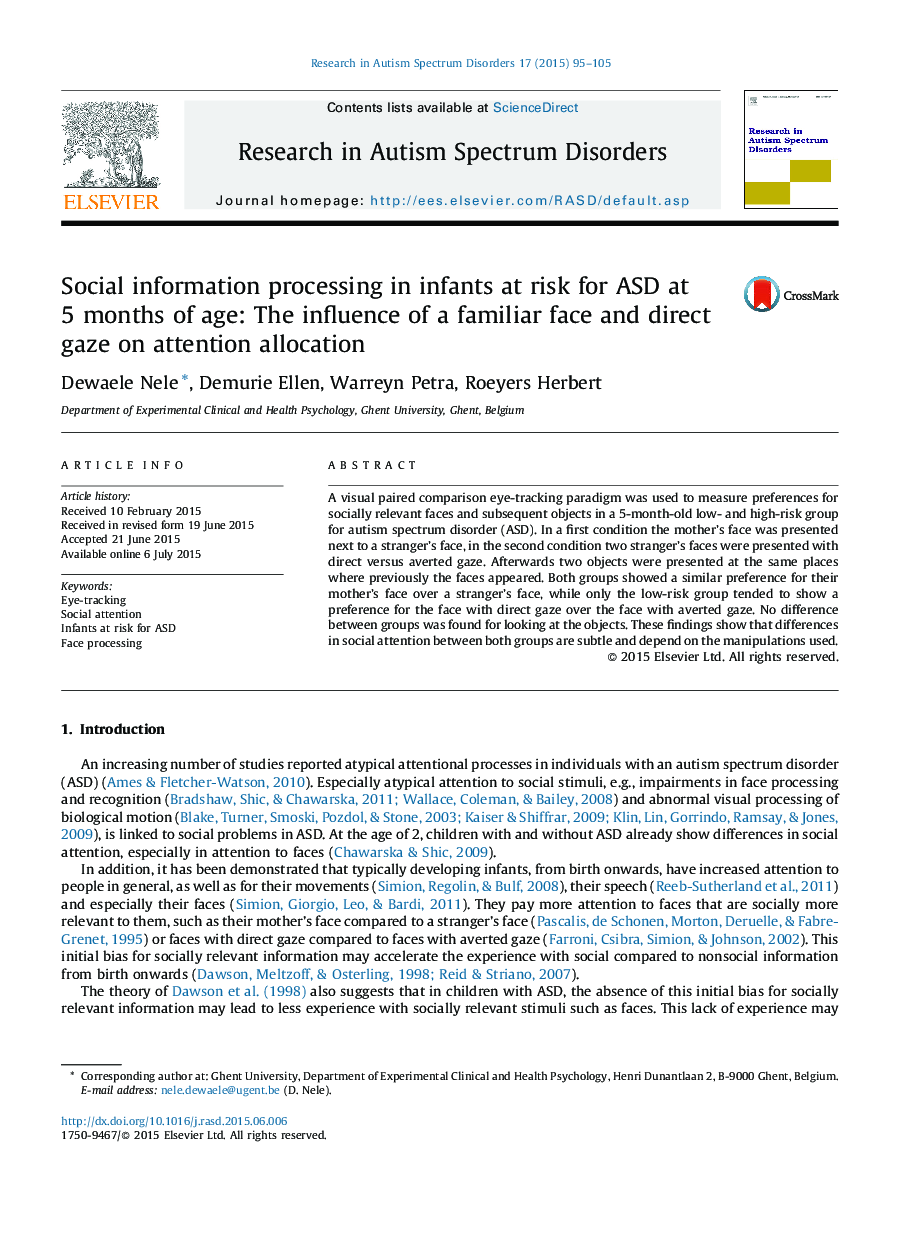| Article ID | Journal | Published Year | Pages | File Type |
|---|---|---|---|---|
| 370046 | Research in Autism Spectrum Disorders | 2015 | 11 Pages |
•Participants were 5-month-old infants at high risk (HR) and low risk (LR) for ASD.•The HR and LR group showed a similar preference for their mother's face.•A difference in preference for direct gaze was found between the HR and LR group.•There was no group difference between groups in attention allocation after face presentations.
A visual paired comparison eye-tracking paradigm was used to measure preferences for socially relevant faces and subsequent objects in a 5-month-old low- and high-risk group for autism spectrum disorder (ASD). In a first condition the mother's face was presented next to a stranger's face, in the second condition two stranger's faces were presented with direct versus averted gaze. Afterwards two objects were presented at the same places where previously the faces appeared. Both groups showed a similar preference for their mother's face over a stranger's face, while only the low-risk group tended to show a preference for the face with direct gaze over the face with averted gaze. No difference between groups was found for looking at the objects. These findings show that differences in social attention between both groups are subtle and depend on the manipulations used.
